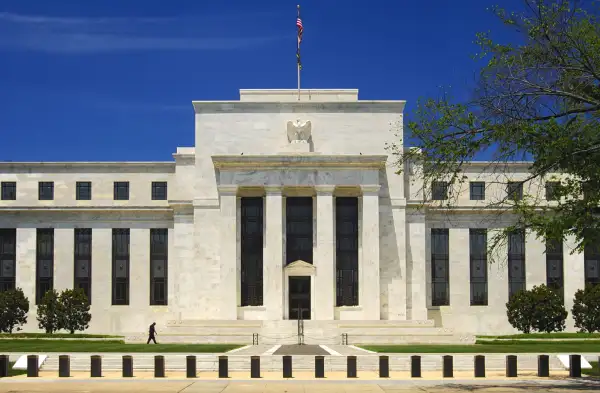Higher Interest Rates Are Coming. Here's Who Wins and Who Loses
Money is not a client of any investment adviser featured on this page. The information provided on this page is for educational purposes only and is not intended as investment advice. Money does not offer advisory services.

Federal Reserve chair Janet Yellen has signaled, by omitting the word "patient" from her latest statement, that the central bank could begin raising interest rates as early as this summer. On Monday, Stanley Fischer also suggested in a speech that rate hikes are likely before the end of the year.
The rise is likely to be slow and bumpy. Still, the Federal Reserve's benchmark short-term interest rate has been near zero since the financial crisis in 2008, and it's been a long time since investors, borrowers and consumers have dealt with a rising-rate environment. The Fed's decision to move rates in the other direction, when it comes, is something you're sure to feel in your wallet.
So here's a primer on who is helped and who is hurt when the Fed makes borrowing more expensive.
Helped: Anyone looking a safe place to stash money
Savings and money market accounts today offer an average interest rate of only 0.44%, according to Bankrate, but the good news for savers is that rising interest rates should buoy yields across the board. One caution is that if the Fed moves slowly, that means the interest earned on your accounts probably won't bump up very quickly either. So if saving more this year is a big priority for you, take matters into your own hands with these moves, geared toward powering up your savings.
Hurt: New borrowers, and anyone with an adjustable loan
Rising interest rates push up borrowing costs for home and auto loans. If you already locked in a 30-year mortgage at the ultra-low rates that have prevailed over the past several years, you were probably smart. According to Freddie Mac, 30-year mortgage rates are 3.7% on average today, compared with nearly 6% a decade ago.
But the millions of Americans who hold adjustable-rate mortgages could end up paying more. Mortgages are typically pegged to the 10-year Treasury bill. While the Federal Reserve doesn't control this rate directly, long-term rates typically rise in response to the short-term rates the central bank sets. The good news? Since Treasuries are a safe haven for global investors, yields are generally being held down by high demand—which rises every time there's bad news in, for example, Europe. So mortgage rates might rise comparatively slowly even after the Fed takes action.
Not so clear: Anyone looking for a job or a raise
One of the Federal Reserve's mandates is is to maintain full employment. When unemployment rises, it can try to stimulate growth by cutting rates. The idea is that cheaper borrowing makes it easier for consumers to spend and for businesses to expand and hire new workers. The flipside is that higher interest rates and tighter money supply can make hiring less likely. That's one of the reasons the Fed has been so hesitant to raise rates in recent years, and there's a risk that a too-early rate hike will cut off job growth.
Of course, keeping interest rates low for too long can come with its own danger: inflation. If there's no "slack" left in the labor market—meaning that basically everyone who wants to work and can work already has a job—the easy availability of money will stop creating jobs and instead show up in the economy as higher prices. Ideally, the Fed would wait to raise rates until the precise moment when employment tops out and before inflation takes off. But where exactly that point is can be a contentious issue. At the moment inflation is very low and wages have yet to take off (suggesting some slack is left.) But a series of strong jobs reports seems to have some on the Fed wanting to get ahead of the curve.
Hurt: Owners of bonds and bond funds
You likely have a portion of your money, in a retirement portfolio such as a 401(k), invested in bonds.
Rising interest rates mean falling bond prices. Bonds typically pay a fixed coupon, so when prevailing rates rise, the value of your bond portfolio falls until its yield matches what's available elsewhere on the market. The size of your losses depend on how steeply rates rise and the maturity, yield and other characteristics of the bonds you own. Wall Street sums up a bond's interest rate sensitive with a figure called duration. You can look a bond fund's average portfolio duration at sites like Morningstar. In general, duration tells you how large a capital loss you can expect for each 1% increase in rates. So Vanguard Total Bond Fund, with an average duration of 5.6, would fall about 5.6% with a 1% increase in rates.
There's good news though: If you own a bond fund, the decline in your fund's value will be made up with higher payouts as your fund acquires new bonds with higher yields. You're likely to be made whole in a few years. Future bond investors benefit, too.
Not so clear: Stock investors
Whether rising interest rates will help or hurt U.S. stocks is a more complicated question.
All else being equal, a hike should hurt. One big reason is many investors choose whether to put money into either stocks or bonds, as bond yields pay more stocks become comparatively less attractive. But there are lots of other things to consider. For instance, stocks typically reflect investors' attitudes about the overall health of the economy. And the if the Fed is signaling that it might raise rates, then it also thinks the economy is healthy enough to handle it. Other investors might view this as a bullish signal.
What does history say? The record is mixed. Stock researcher S&P Capital IQ recently examined 16 previous rate tightening cycles since World War II and found that the Fed's moves led to stock market declines of 5% or more about four-fifths of the time. However, a separate study by T. Rowe Price looked at the question slightly differently: T. Rowe examined nine instances since 1954 that the Fed has raised rates following a recession. It found an average market gain of 14% a year later. In other words, it's hard to know exactly how the market will react—except to say that it could be bumpy ride.
Helped: Banks
Banks make money by borrowing at low short-term interest rates (think checking and savings deposits) and lending it out at higher, longer-term rates. In an ideal world, they’d love short-term rates to remain at rock bottom, as long as longer term rates are high too. So you might not think they’d be cheering for a short-term interest rate increase.
Their problem has been that long-term rates aren't high, but low. Meanwhile short-term interest rates can’t really go below the zero they're stuck at. That's left them little room in the middle. A rate hike will could give banks a window of opportunity to earn more attractive "spreads" once the Fed moves.
Helped: Anyone looking to spend U.S. dollars abroad
When interest rates rise, it pushes the value of U.S. currency up. That's good for American consumers who want to buy foreign goods (and go on European vacations) cheaply.
Hurt: Anyone looking to sell things to foreigners.
But there are dangers in a too-strong dollar. If our currency is too strong, it means it willll be harder to sell U.S.-made products globally—which would be bad for economic growth.
Not so clear: Foreign stock funds
Most international-stock mutual funds hold assets denominated in other currencies, like the euro. The strong dollar means those assets they are worth less, all else being equal. (Some funds "hedge" their currency exposure.)
Over the past year, the MSCI All-Cap World EX-USA index is up 14.6% in local currency terms through Feb. 28. But according to Morningstar, the average foreign stock mutual fund—with roughly half its assets in Europe —has falled 0.06%.
On the other hand, the a strong buck isn't all bad for foreign stocks. Companies in countries with weaker currencies will be able to export more goods to the U.S, boosting their earnings. And while it’s no fun to see your market winning vanish, investors are usually better off riding out such currency swings. When the dollar next weakens, your foreign stocks will have a tail wind.
One special case is emerging markets stocks. Razor-thin U.S. interest rates have been a boon for them, as U.S. investors, frustrated by dismal yields at home, have shifted money abroad. Once that changes, much of that money could rush back home.

